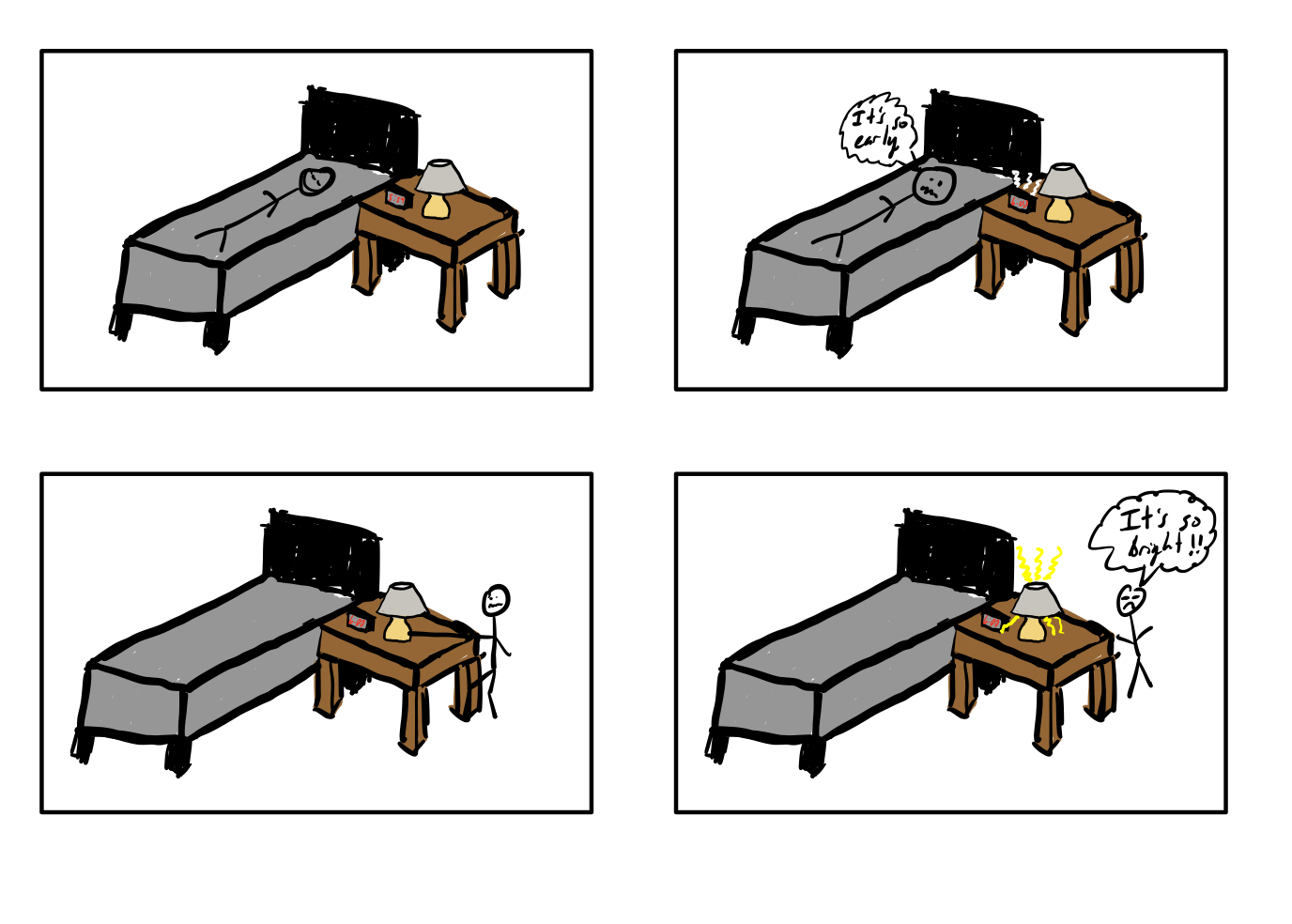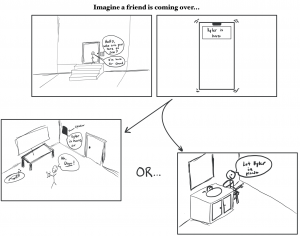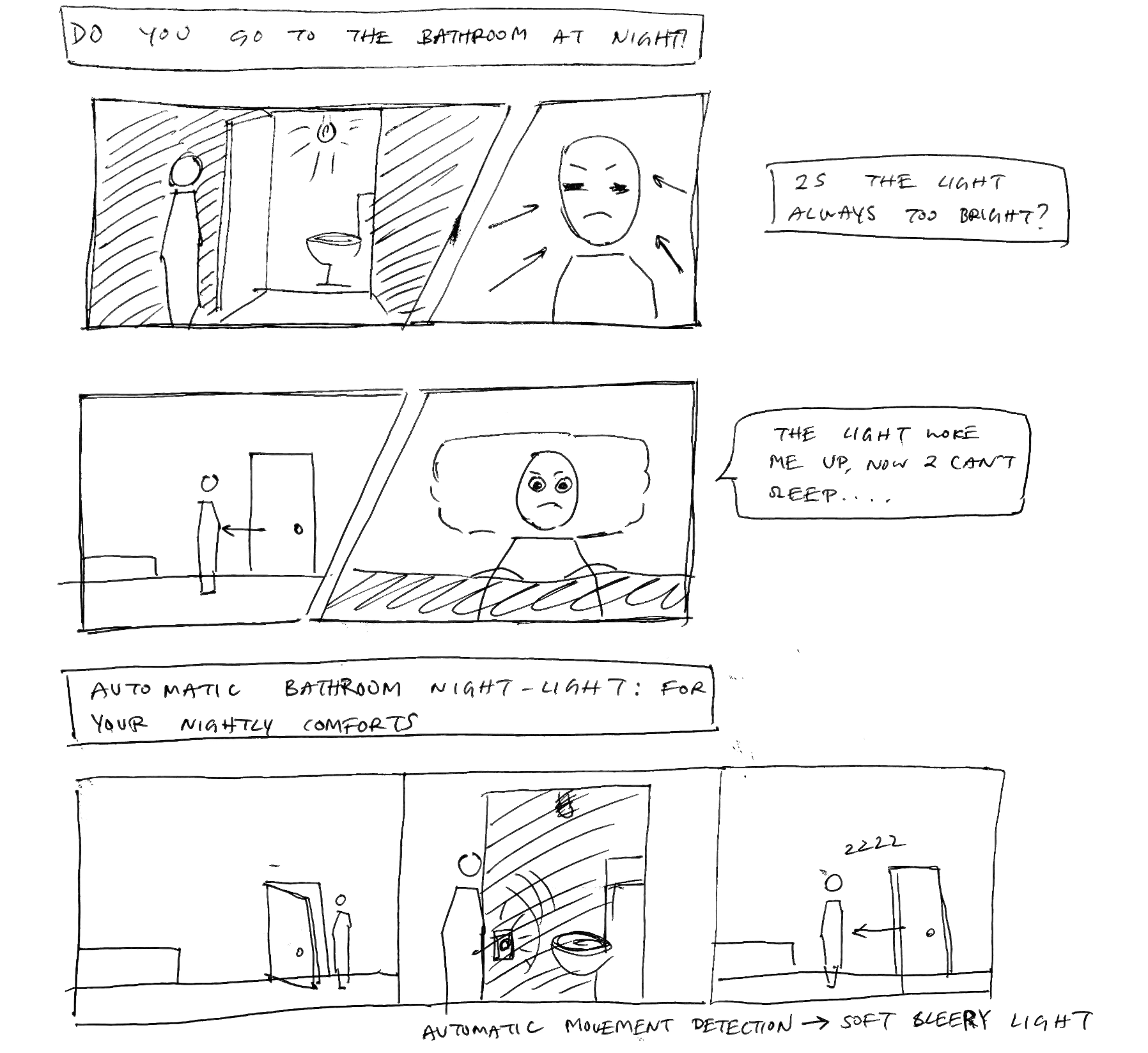Class 2: 20 Jan
Introductions and Admin
Self introductions and discussion of readings
URL for Shedroff and Noessel’s book, https://amzn.to/3tMd6qi
Discuss
Reading assignment — what makes something interactive?
Does interaction require emotion or just the appearance of emotion? When do we go from “robot” to “uncanny valley” to “human”?
Musicians and DJs working a crowd — who is interacting and who is driving the interaction?
So what is physical interaction? When/where did it start?
Physical Interaction History
Beekeepers – explain the complexity of a hive and how we’re only just now (past 20 years) discovering how bees vote to make hive-wide decisions. We think of hives as being illuminated because we open them up. Bees operate in total darkness using only touch, hearing, and smell. “Honeybee Democracy” is a great introduction to how science works and how to write about science: https://amzn.to/2Z6Y9yL
People knew that honey bee “propolis” helped prevent infection thousands of years before we discovered bacteria. Working in ignorance still leads to progress.
Alchemists – trying to make things happen with substances they don’t understand. If you don’t know about elements what decisions are making to interact with substances? A lot of chemistry was “discovered” while looking for gold.
New music and dance styles based on sampling and analog synths: Moog, ARP 2600, hip-hop. Early hip-hop was limited to record players and mics; early synths were insanely expensive and shared at fancy studios. Grand Wizard Theodore invented scratching: https://www.youtube.com/watch?v=eHCOIK_fICU
Console games with physical feedback, Rez Trance Vibrator by Tetsuya Mizuguchi: https://www.theverge.com/2016/9/25/13046770/rez-trance-vibrator-ps2 Game was based on electronic music in the mid-90s: https://www.youtube.com/watch?v=YZL4Cbt-knk
Dance Dance Revolution moves from arcades to home console games
Driving assistance with vehicles: AI? Interaction? What if the car won’t let me turn, start, or stop? How can I disable safety features?
Flight assistance software in commercial aircraft. Is autopilot interactive?
Flight assistance for military aircraft: self-guiding drones, incoming missile warnings for helicopter pilots. Interaction or reaction?
Near-future Interaction
the focus of this class – we’re prototyping for five years out
- interacting with intelligent systems that we don’t completely understand and that can make decisions against our will or with results we don’t appreciate
- car that thinks you’re too intoxicated, sleepy, or incompetent to drive, so it refuses to move
- home automation system that won’t open the doors and let you leave because the particulate count in the air is hazardous and you’re not wearing a mask
- police equipment that won’t let you fire at unarmed civilians — pistol trapped in a holster, safety wont go off.
- fire engines that won’t engage fires that cannot be contained
- entertainment systems that can filter content as part of mental-health
We’re giving “agency” to interactive devices: https://en.wikipedia.org/wiki/Agency_(philosophy) at least at the input level: “OK GOOGLE”, “Hey, Siri”. This means that the device is listening (recording?) all the time. Do your pets have agency?
Anton Yelchin was killed by his car, possibly by bad interface design.
“Near-future” is a popular base of pop-culture: MCU (Marvel Cinematic Universe) is always set a few years from now Blade Runner (1982) was set in 2019, 37 years in the future. Blade Runner 2049 (2017) is 32 years in the future of Blade Runner.
practical effects are used as input devices to imagined systems of the future
Adam Savage gets a no-spoilers tour of the Blade Runner 2049 prop shop: https://youtu.be/1fAk0CObPE4
This is not new, in the past we talked about the future and technology. Design for Dreaming, released in 1956, is all about the future. It’s also all about the level of sexism in the 1950s: https://youtu.be/1gKl-mwMyck
Good drama is about storytelling — what if interactive devices are characters in the story? Are we giving them agency by making them characters and not props?
- 2001 A Space Odyssy (1968) — HAL 9000, the ship’s computer, decides it does not want to follow the plan laid out by humans
- Colossus: The Forbin Project (1970) — our super computer meets the Soviet supercomputer and they plan our future
- Alien (1979) — MOTHER, a semi-intelligent computer that controls spacecraft while humans are in cryosleep.
- War Games (1983) — A computer controls all of America’s nuclear weapons. Would you like to play a game? the only way to win is to not play the game.
- ST:TNG’s Data — a walking mobile phone with AI smarter than any human?
- Terminator (1984) — is a robot killing machine from 2029. Are the sequels — where T-800 has agency — good examples?
- Farscape (1999-2003) — Moya, a Leviathan class creature, is a semi-intelligent spacecraft used by the main characters. She can refuse orders or do things because of her own desire against the will of her passengers. However, the Pilot is physically integrated with Moya at the physical level and can communicate directly with humans.
Assignment 1, due at 11:59 the day before class, so these are due Monday, 24 Jan
1) Watch the entire “Design for Dreaming” film and make a few notes on the differences of it looking forward in time and contemporary entertainment like Blade Runner 2049 or the MCU. We’ll talk about this a bit in class.
2) This is a pen-and-paper assignment to go over posting to the class blog and what a good submission looks like. If you want to make something with hardware, that’s fine, but it’s not required. Science fiction is ok, fantasy is not. ever. NO UNICORNS.
First, read Tom Igoe’s what-not-to-do page – http://www.tigoe.com/blog/category/physicalcomputing/176/
Next, make up a project:
– A smarter doorbell, similar to the smart thermostat
– Make a useful practical effect by giving interaction to a thing that doesn’t currently interact with humans. For inspiration, watch Blade Runner 2049. Yes, it’s 3 hours long but OMFG. Look at the physical interfaces between intelligent systems, replicants, humans, AI, and agency for androids.
Prepare the presentation as you would for a crit. Look at previous classes for inspiration. If the blog is not yet available you can do something similar in Word or other desktop applications and share your screen with the class.
https://courses.ideate.cmu.edu/48-339/f2019/
https://courses.ideate.cmu.edu/48-339/s2018/



